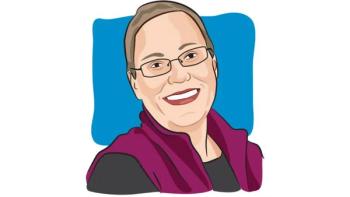
Three-Drug Combo Meets ‘Gold Standard’ Overall Survival for Older Patients with Multiple Myeloma
Darzalex plus Revlimid and dexamethasone may be the preferred option to treat older patients with multiple myeloma who are ineligible for stem-cell transplant.
Darzalex (daratumab) plus Revlimid (lenalidomide) and dexamethasone may improve survival with no safety concerns in patients with newly diagnosed with multiple myeloma who are ineligible for stem-cell transplant, according to recent study results.
“While there are treatment options for these patients right now, given the incurable nature of multiple myeloma, improvements in therapies that will provide for longer duration of response is an ongoing need,” Dr. Shaji K. Kumar, author on this study and professor of medicine at the Mayo Clinic in Rochester, Minnesota, told CURE®. “This particular regimen provides one of the longest progression-free survival for patients who are not eligible to undergo an autologous stem cell transplantation.”
Patients included in this study, which was published in The Lancet Oncology journal, were newly diagnosed with multiple myeloma and were ineligible for high-dose chemotherapy with autologous stem-cell transplantation because of age or comorbidities.
Researchers evaluated progression-free survival (time during and after treatment when the patient lives without disease progression) and overall survival (time from diagnosis or treatment start when patients are alive) in 737 patients (median age, 73 years). The Darzalex group (368 patients) received a 28-day cycle of Darzalex plus oral Revlimid and oral dexamethasone. Those in the control group (369 patients) received Revlimid and dexamethasone.
At the median follow-up of 56.2 months, median progression-free survival was not reached in the Darzalex group and was 34.4 months in the control group. Median overall survival was not reached in either group. Kumar explained that when progression-free survival and overall survival are not reached, it is a good thing and highlights a longer survival.
“This is very important, as the overall survival endpoint remains the gold standard for demonstrating superiority of a treatment approach in multiple myeloma,” he said.
The most common side effects that occurred in more than 15% of patients in the Darzalex or control groups included neutropenia (54% versus 37%, respectively), pneumonia (19% versus 11%), anemia (17% versus 22%) and lymphopenia (16% versus 11%). Serious side effects occurred in 77% of patients assigned the Darzalex regimen and 70% of those assigned the control regimen. Treatment-related deaths occurred in 4% of patients in the Darzalex group and 3% of patients in the control group.
These results suggest that Darzalex plus Revlimid and dexamethasone may be an ideal regimen for initial therapy in older patients, Kumar added.
“These results should place this three-drug regimen as a preferred option for patients with newly diagnosed multiple myeloma who cannot undergo an autologous stem-cell transplantation and are able to tolerate a three-drug combination. For those patients who cannot tolerate a three-drug regimen, the results with the (Revlimid) and dexamethasone combination suggest that it is also a feasible approach,” he concluded.
For more news on cancer updates, research and education, don’t forget to





